Keyword Research Is The New Market Research
When you start a business it only makes sense to do research on the market in which you are about to compete. The same holds true whenever publishing a piece of content on your website. Keyword research is officially the new market research.
In the grand scheme of things, every page on your site should target a specific keyword. Your website as a whole should publish content intended to educate, inform, convince and convert users from visitors to clients.
As illustrated below, an effective keyword and content strategy will drive traffic at each level of the buyer journey.
Marketing and sales funnel illustration by Paperform.co.
With e-commerce sales expected to rise more than 17% each year, keyword research should continue to be a regular part of your business cycle to contribute to capturing more leads.
Keyword research is probably one of the most undervalued aspects of search engine optimization. As an essential part of a local SEO strategy, failing to perform adequate keyword research is one of the most common mistakes made by small businesses.
Use the following insights afforded from effective keyword research in order to publish content that ranks highly, engages your audience and converts to new clients.
Think Like the Client
Meet your audience wherever they are in the buyer journey and think of what they need to know about your business. If you were in the market for your own product or service, how would you go about your research? Define personas to connect more deeply with the problems and obstacles your audience is encountering.
Buyer personas can help with the thought process that your clients go through before making a purchase. As you dig deeper into the topics and subtopics of a keyword, there are issues that become obvious inclusions to the content you publish when targeting specific keywords.
Go Undercover
Research your keyword in discussion forums or social media groups. Look in the places your audience would look to find answers to problems they might be having.
Incorporating solutions to commonly searched problems is a common practice for publishing content that ranks highly.
Get to the heart of the problems people experience by hearing it straight from their own personal experiences.
Reddit is a prime example of a site to use to identify the issues that are most important to people.
Type in your keyword topic in a search and read through some of the discussion threads that start with questions or requests for help.
It’s not always just uncovering problems you were unaware of that holds value in your research. It’s also the questions people are asking and the way they are asking them that makes your keywords more relevant.
Develop the Blueprint for Your Keyword/Content Strategy
Create a topic cluster to give you a general idea of how your keywords will work together to funnel your traffic. Developing depth in a target keyword topic will contribute to a high ranking. This practice uncovers relevant subtopics and identifies long-tail keywords to target.
The pillar page concept is the idea of centring an entire topic around one main page. The pillar page covers a topic in breadth but links out to other pages for more in-depth coverage about that particular subtopic. This structure is ideal for identifying long-tail keywords.
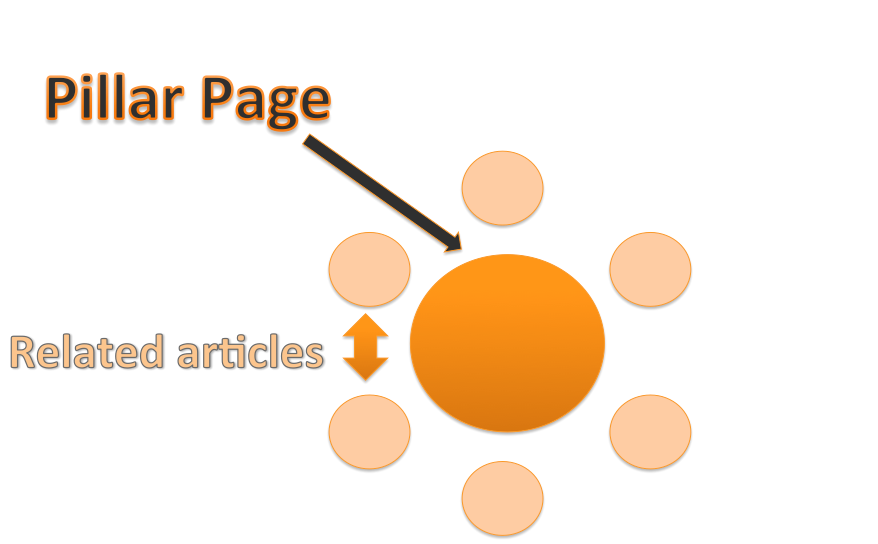
The advantage of targeting long-tail keywords is that they bring users directly to the information they are looking for in a search. Long-tail keywords are typically higher converting because they narrow down the potential intent of a search. They attract a better match to your website by being more specific and detailed.

Image source: Singlegrain
A complete topic cluster serves as a blueprint for your content strategy. For every keyword topic, you will need to create content. This organizes your site structure by establishing the topics or “buckets” to group keywords together with similar intent.
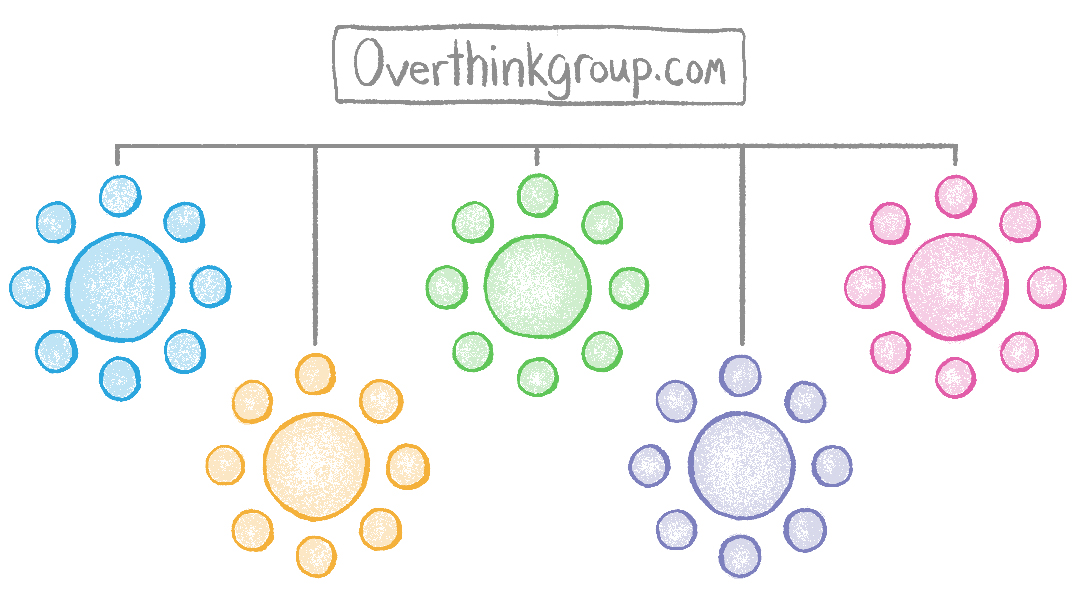
Survey the Landscape
Before deciding on any keyword, you need to see how the first page of the results is populated. Search Google for your keyword to get more keyword options and build a stronger solution to satisfy search intent.
When you look at a SERP (search engine results page) the first thing you confirm is whether the results are all related to what your business offers.
Are you seeing 10 of your competitors listed in the results? This would confirm the user is looking for businesses or websites like your own.
What does Google list in the auto-suggest drop-down box when typing your keyword? There are key phrases that Google is telling you are commonly searched you can use to add relevance to your page.
There are also more keyword options in “Searches related to [your keyword]” at the bottom of the page.
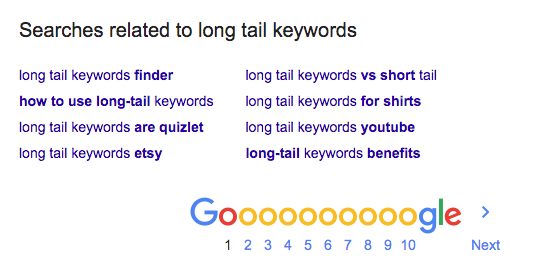
There is a goldmine of keywords in the People Also Ask Box.
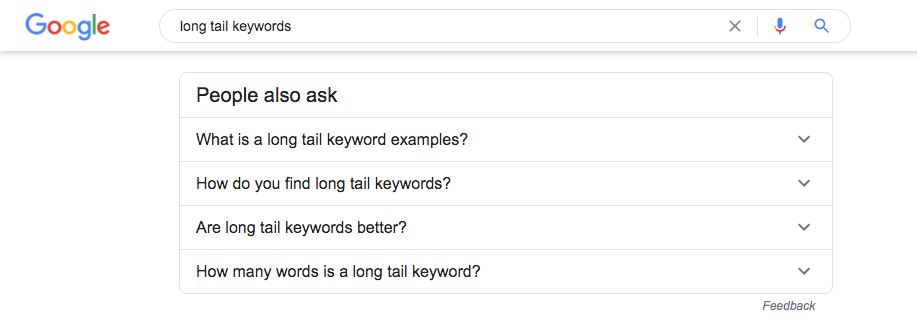
Collect keywords and phrases that will match the intent of your page. Use as many of Google’s suggestions for commonly searched terms to strengthen the optimization of your page.
Google SERP Features
The SERP features that are present in a keyword search are an important consideration when choosing a keyword. There are over 20 different Google SERP features that could present themselves.
All features Google displays absorb a percentage of clicks from the available traffic. On average, the #1 position gets 30.54% of the available traffic, while the #10 position gets about 1.13% of the available traffic.
No matter where your site ranks on the first page, a position can be won in some of the features to increase your click-through rate. Featured snippets are a prime example that adds an average of 8% more traffic to your page.
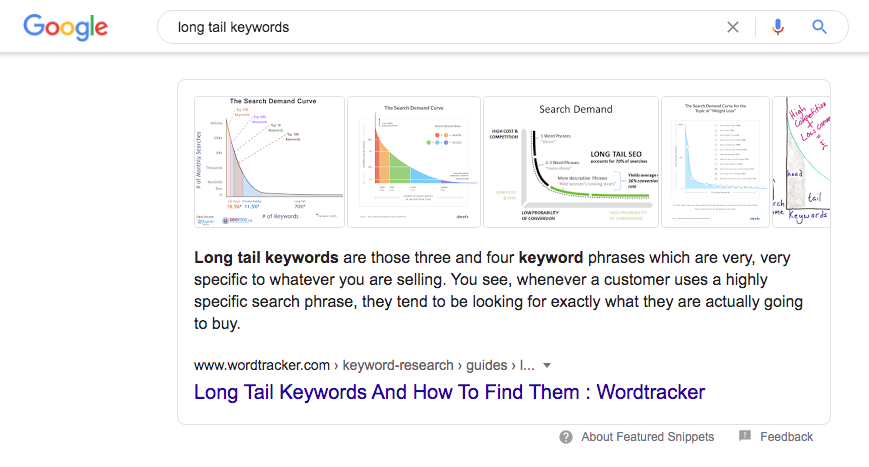
However, there are others that will diminish your organic click-through rate.
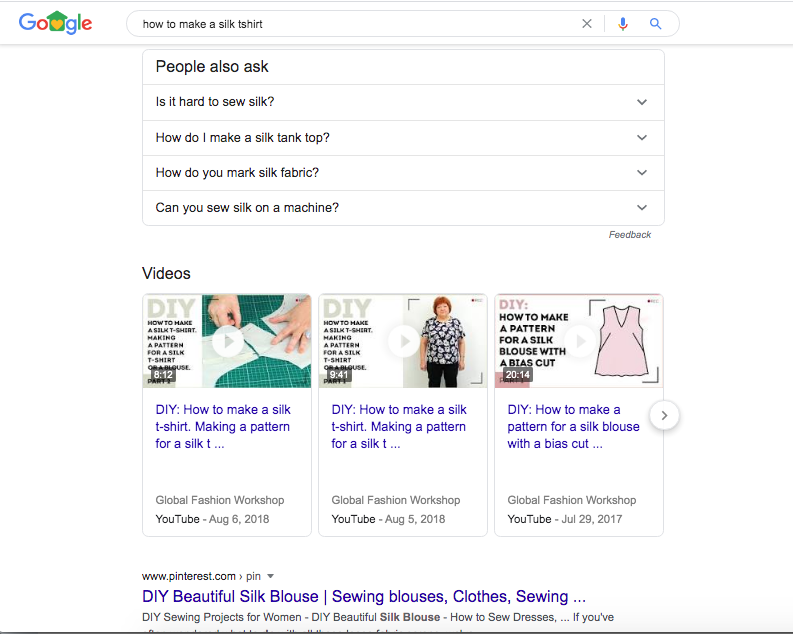
Google Shopping Ads, video carousel & PAA box before the first blue link.
The SERP features indicate what type of content is needed to maximize the traffic available for a particular search term. If your keyword was french press it’s obvious that videos are needed to maximize available clicks since they are ranking at the top of the SERP (after the paid ads).
Assess the Strength and Strategy of the Ranking Pages
A competitive analysis should be a regular part of your keyword research. If you are going to win a top position in the search results, you need to understand how the ranking sites are winning it, so you can do it better.
The two biggest ranking factors are content (the ability to satisfy search intent) and backlinks (page authority). You can gain insight into the strength of both of these areas by assessing the backlinks your competition has and the keywords they rank for.
Improve Your Pages Ability to Satisfy Search Intent
Check for any similarities in content across the top-ranked pages. If every page has published an in-depth, 4000 words “Ultimate Guide”, it’s an indication that an “Ultimate Guide” is the type of content ranking. You will need to publish content that meets and exceeds the quality of the competing pages.
Using a tool such as Ahrefs, Moz or SEMRush will help to reverse engineer a top ranking. A content gap analysis is a common tactic to identify important topics included on a top-ranking page. Using the tool of your choice, enter the URL of the ranking page to get an overview of the pages metrics, which includes all ranking keywords.
Identifying the keywords a page ranks for provides insight into the content the page covers. It also indicates the relevance of that content to satisfying search intent.
If you can cover all the topics your competition has, you have a good chance of outranking the page based on the ability of your page to satisfy the user’s intent. Targeting the same keywords within your content strengthens your optimization.
Set realistic goals based on the strength of your competition
Selecting the best keywords to target also means basing your selection on realistic ranking goals. When you’re considering a keyword to target, you need to take into account the strength of your competition.
Moz, Ahrefs and Majestic each provide a scale for measuring the strength of a domain and a web page, which is based on backlinks. You can gauge how realistic it would be to compete with a page in authority by assessing the number of links and the quality of the links pointing to the page.
For an overview of the strength of your competition download Mozbar, an extension available in Chrome. Using this tool allows you a quick comparison of the sites that are listed in a search result. The tool shows you the page authority, domain authority, number of links pointing to the page.
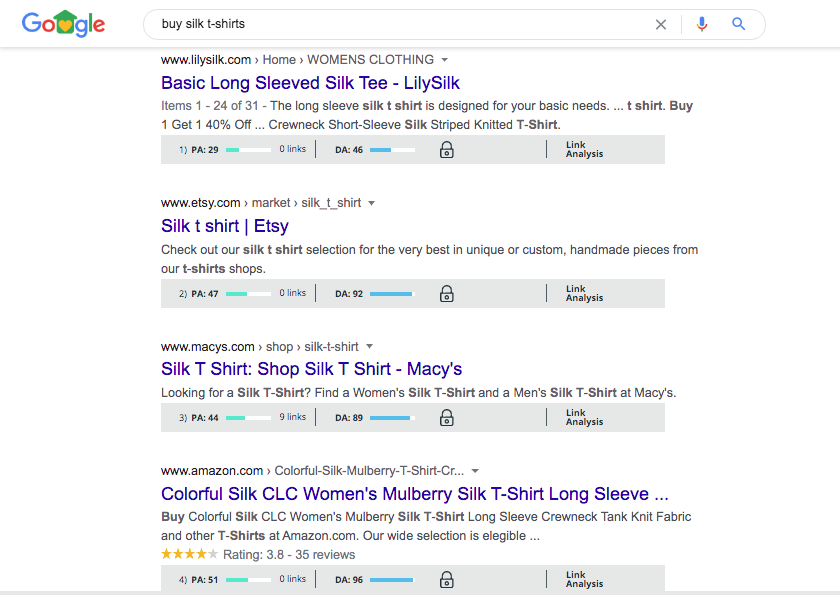
For a more in-depth analysis of the quality and relevance of the links click on the “links” segment of the Mozbar. A new tab will open taking you to the Moz site allowing you to see the linking domains. This insight gives you an idea of the types of link building strategies that you may need to use to get your page to rank in a top position.
Keyword Research is the Foundation of Your Keyword & Content Strategy
Keyword research provides insight into the risk and rewards of targeting a specific keyword. Develop a content strategy that allows your website the greatest reach by ranking highly for terms that attract visitors who are a perfect match for your content.
Choose keywords that point users to educational content that addresses the problems commonly shared by your target audience. Customers are 131% more likely to buy from a company that has educated them on a specific aspect of their business.
Keyword research is the new market research. When executed correctly, the traffic you drive is a perfect match to your site, providing you with new clients and increased revenue on a regular basis.









